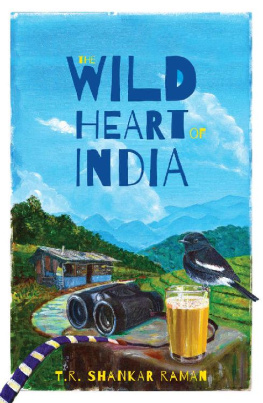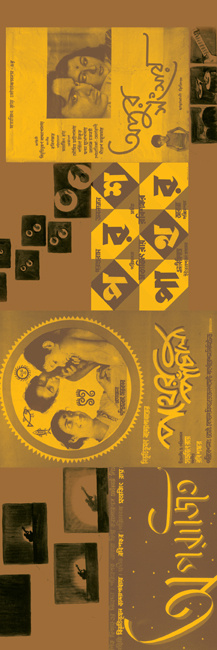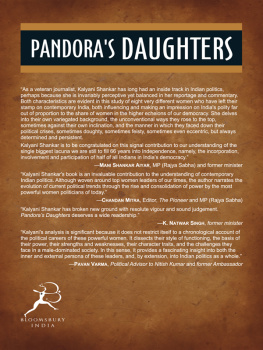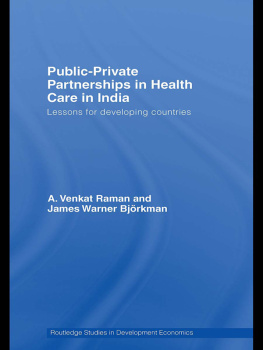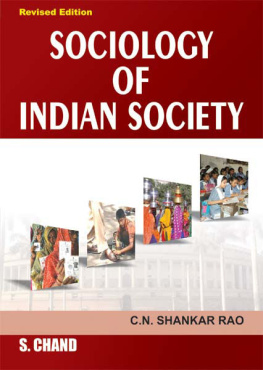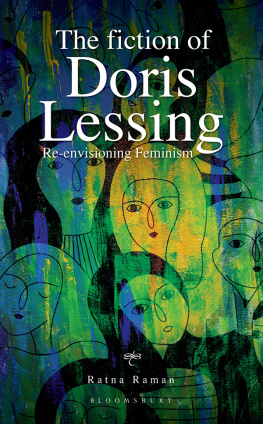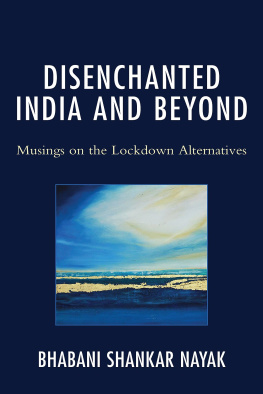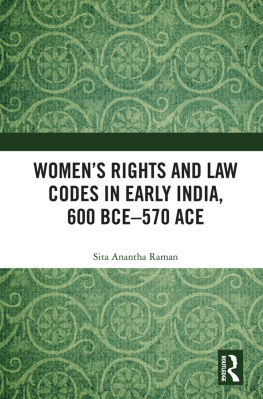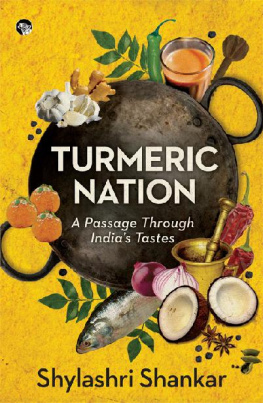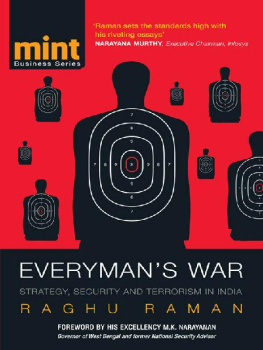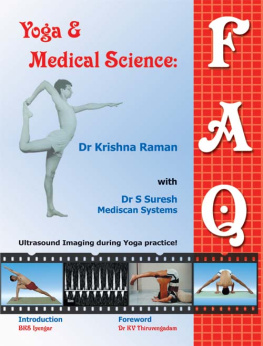T.R. Shankar Raman - The Wild Heart of India
Here you can read online T.R. Shankar Raman - The Wild Heart of India full text of the book (entire story) in english for free. Download pdf and epub, get meaning, cover and reviews about this ebook. year: 2019, publisher: OUP India, genre: Detective and thriller. Description of the work, (preface) as well as reviews are available. Best literature library LitArk.com created for fans of good reading and offers a wide selection of genres:
Romance novel
Science fiction
Adventure
Detective
Science
History
Home and family
Prose
Art
Politics
Computer
Non-fiction
Religion
Business
Children
Humor
Choose a favorite category and find really read worthwhile books. Enjoy immersion in the world of imagination, feel the emotions of the characters or learn something new for yourself, make an fascinating discovery.
- Book:The Wild Heart of India
- Author:
- Publisher:OUP India
- Genre:
- Year:2019
- Rating:4 / 5
- Favourites:Add to favourites
- Your mark:
- 80
- 1
- 2
- 3
- 4
- 5
The Wild Heart of India: summary, description and annotation
We offer to read an annotation, description, summary or preface (depends on what the author of the book "The Wild Heart of India" wrote himself). If you haven't found the necessary information about the book — write in the comments, we will try to find it.
The Wild Heart of India — read online for free the complete book (whole text) full work
Below is the text of the book, divided by pages. System saving the place of the last page read, allows you to conveniently read the book "The Wild Heart of India" online for free, without having to search again every time where you left off. Put a bookmark, and you can go to the page where you finished reading at any time.
Font size:
Interval:
Bookmark:

THE WILD HEART OF INDIA
THE WILD HEART OF INDIA
nature and conservation in the city, the country, and the wild
T.R. SHANKAR RAMAN


Oxford University Press is a department of the University of Oxford.
It furthers the Universitys objective of excellence in research, scholarship,
and education by publishing worldwide. Oxford is a registered trademark of
Oxford University Press in the UK and in certain other countries.
Published in India by
Oxford University Press
2/11 Ground Floor, Ansari Road, Daryaganj, New Delhi 110 002, India
Oxford University Press 2019
Illustrations Sartaj Ghuman
The moral rights of the author have been asserted.
First Edition published in 2019
All rights reserved. No part of this publication may be reproduced, stored in
a retrieval system, or transmitted, in any form or by any means, without the
prior permission in writing of Oxford University Press, or as expressly permitted
by law, by licence, or under terms agreed with the appropriate reprographics
rights organization. Enquiries concerning reproduction outside the scope of the
above should be sent to the Rights Department, Oxford University Press, at the
address above.
You must not circulate this work in any other form
and you must impose this same condition on any acquirer.
ISBN-13 (print edition): 978-0-19-949474-3
ISBN-10 (print edition): 0-19-949474-6
ISBN-13 (eBook): 978-0-19-909755-5
ISBN-10 (eBook): 0-19-909755-0
Typeset in Utopia Std 10.5/15
by Tranistics Data Technologies, Kolkata 700 091
Printed in India by Nutech Print Services India
For
Sitalakshmi Rajagopalan and T.R. Rajagopalan
Chandra Mudappa and (Late) B.P. Mudappa
CONTENTS




The scientific names of plants and animals have generally not been included in the main text but are listed at the end of the book against their respective English or local names, the latter chosen as appropriate for the regional setting of the chapter. The scientific and English common names have been updated as per recent taxonomy and are based on sources included in the Select Bibliography. Place names, too, reflect current usage (such as Chennai for Madras and Bengaluru for Bangalore). Words derived from local languages now in common usage and with stable spelling in India (such as dosa, jhum) have not been italicized in the belief that if these are not already in the English dictionary, they should be. Sources of previously published work and co-authors are indicated for each chapter in the Publication Credits; the publishers are gratefully acknowledged for permission to use the material here. Some previously published work has been edited or revised to include relevant new scientific information or taxonomic changes, or for consistency in style, species names, and metric units, and for better coherence with the rest of the volume. In a couple of cases, essays were combined to provide greater depth or reduce overlap in content.
One of the penalties of an ecological education is that one lives alone in a world of wounds. Much of the damage inflicted on land is quite invisible to laymen. An ecologist must either harden his shell and make believe that the consequences of science are none of his business, or he must be the doctor who sees the marks of death in a community that believes itself well and does not want to be told otherwise.
Nature, some people believe, is something out there, in forests or far wildernesses, separate from the dwelling or presence of humans. The book you hold in your hand is an attempt to dispel, or at least blur, such a sharp separation between people and nature. From city park to savanna, roadside to rainforest, and ocean bed to mountaintop, nature thrives and throbs around you, inseparable, omnipresent. It both envelops you and forms a part of who you are. You only have to open your senses to nature to perceive its eternal dance of life, death, and renewal, and participate in its shimmering wonder.
Such perception and participation carries both risk and responsibility. The risk, as Aldo Leopold noted presciently, comes when an ecological education opens your eyes to a wounded world: A world whose forests are stripped for timber and commodity plantations, whose earth is submerged by dams and gouged by mines. A world paved and polluted, increasingly defined and defiled by metal, mortar, and money. The sense of responsibility emerges from the awareness that the science of ecology (a word originating from the Greek oikos, dwelling place) concerns the science of home. As befitting a science of home, ecologys core concerns are relationships: life in relation to the environment, people in relation to planet. It is a science that traces connections, from one living organism to another, from sunlight through plant to predator, from humans to earth and landscape. Ecology, perhaps the most important science of the present century, also impels a curative response. It elicits a creative mission to retain the integrity of home, to heal the world of wounds, and restore relationships between people and place.
This collection of essays describes experiences and perspectives gained in wildly varied landscapes and waterscapes, from city and countryside to ocean and deep forest. Written over a period of 25 years, more than half my lifetime, these essays trace my own trajectory of learning about, engaging with, and reflecting on nature. They chart my journey from young student and naturalist in Chennai, through my training in wildlife science and ecology in Dehradun and Bengaluru, to my present life as a conservation scientist and writer working out of my home and field research station in the Anamalai Hills in southern India. Most of these essays emerged from journeys and field experiences with Divya Mudappa, wildlife biologist and fellow traveller into the wild heart of India. Journeying with Divya has always been an enriching experience of witnessing, photographing, and forming impressions, images, and ideas that finally found expression in these words. I co-authored 10 essays (or their earlier versions) with her, but most of the others, too, are from our time in the field together: out of a memorable encounter, an extended conversation, a close observation, a shared silence.
The essays in this collection are divided into three parts; each may appeal to readers whose inclinations and interests in nature take different shapes: those captivated by the lure and challenge of field observation and experience; those driven by a passion to conserve nature and wildness; and those trying to understand our place and role in nature in a rapidly changing world. I hope that these essays will resonate with you, reader, irrespective of where you live or why nature interests you.
The first part, , recounts things that I learnt or impressions I gained in the field that travellers, students of ecology, or observers of natural history may perhaps experience themselves. This part conveys varied experiences in the field that lasted a few hours or days to nearly three full years of research in forested mountains.
Font size:
Interval:
Bookmark:
Similar books «The Wild Heart of India»
Look at similar books to The Wild Heart of India. We have selected literature similar in name and meaning in the hope of providing readers with more options to find new, interesting, not yet read works.
Discussion, reviews of the book The Wild Heart of India and just readers' own opinions. Leave your comments, write what you think about the work, its meaning or the main characters. Specify what exactly you liked and what you didn't like, and why you think so.

